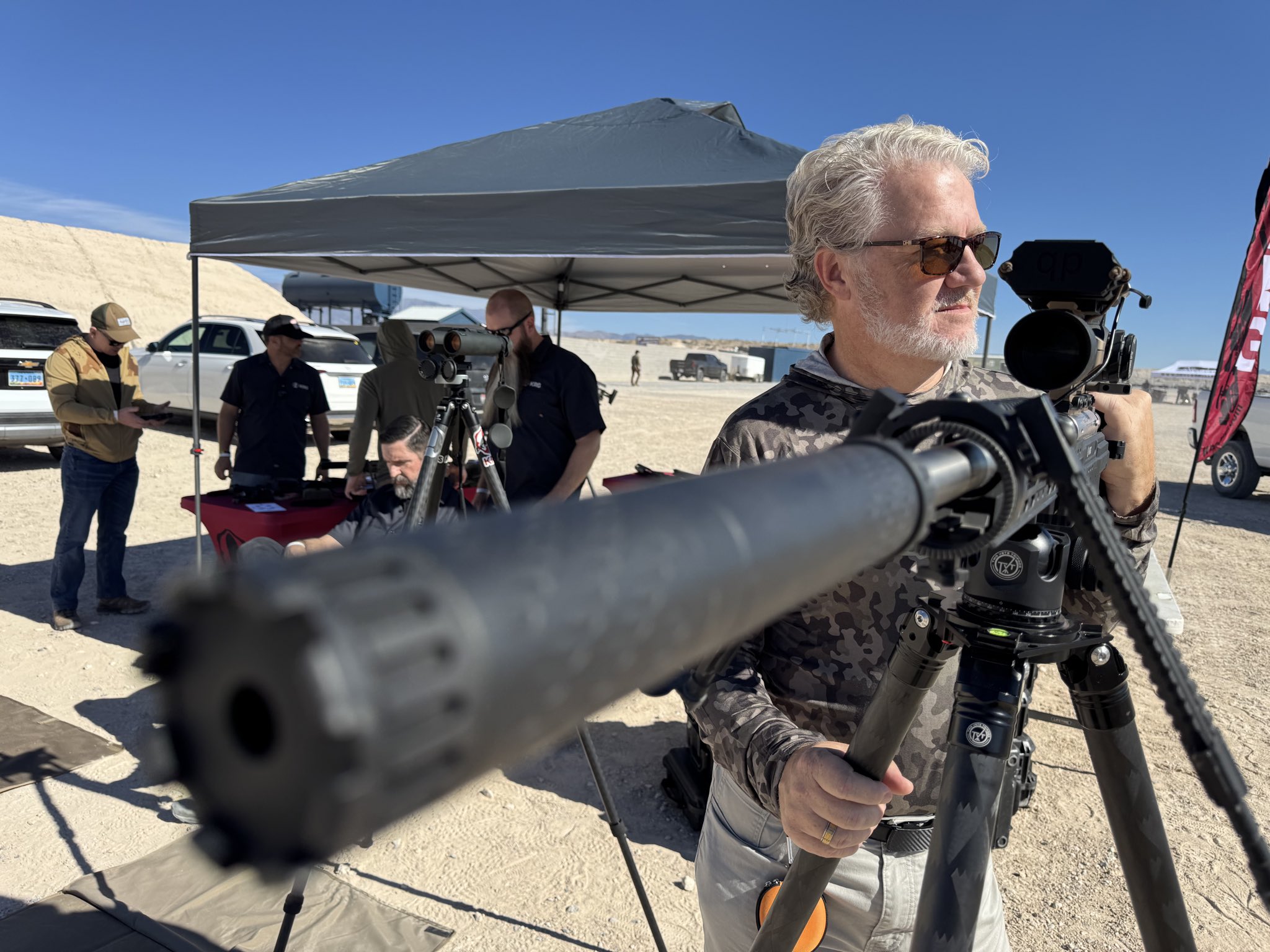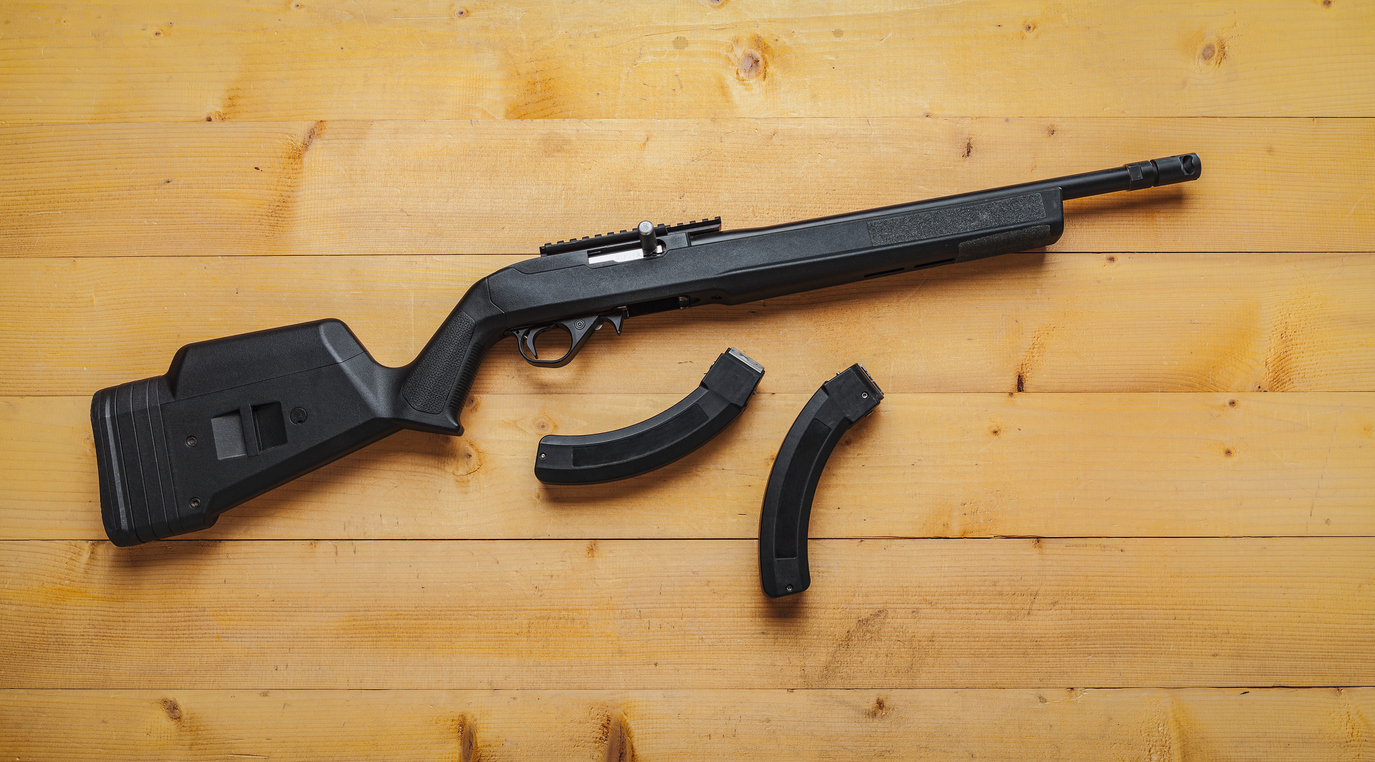Most shooters spend years chasing tighter groups, smoother triggers, and better optics, but there’s one thing that quietly affects your accuracy more than most people realize: your eye dominance in shooting.
We talk about rifles, ammo, and technique all day long, but very few shooters ever stop to think about how their vision is shaping what they see through those sights. We assume both eyes are working together in perfect balance, but that’s not always true. The truth is, your brain is wired to favor one eye over the other, and if that eye doesn’t line up with your shooting hand, you’re already at a disadvantage before you ever press the trigger.
I’ve been shooting my whole life, and I’ll be honest, it took me a long time to figure that out. For years, I was chasing mechanical fixes to a biological problem. I’d tweak my grip, adjust my stance, swap optics, even blame my rifle when things didn’t feel right. My fundamentals were solid, but something always seemed off. It wasn’t until I learned that I was right-handed but left-eye dominant that everything started to click.
Looking back, it made perfect sense. My sight picture always felt slightly strained. I was trying to force the use of my right eye and shoot right-handed. I used all kinds of techniques: closing one eye to “force” a clean view through my optic, using my right eye, but always wondering why my shots never felt as natural as they should. Once I gave in to my eye dominance, it started to feel normal.
But I had to do something different with a rifle than I did with a handgun. More on that in a minute.
What Eye Dominance Actually Means
Your eyes aren’t equal when it comes to how your brain processes what you see. Both eyes take in almost the same image, but your brain doesn’t treat them the same way. It relies more heavily on one of them to provide clarity, focus, and alignment. That is called ocular dominance, and it is just as real as being right- or left-handed.
When your brain decides which eye to trust more, that eye becomes your reference point for everything you do visually. It sets your sense of direction, determines your depth perception, and establishes your natural point of aim. The non-dominant eye still helps with balance and peripheral vision, but the dominant eye takes the lead.
Ocular dominance starts in the visual cortex of the brain. This is where the nerve pathways from both eyes meet and process what you see. In most people, one of those pathways is slightly stronger or sends cleaner information, so the brain relies on that side more often. You do not get to choose which eye becomes dominant, and it rarely changes once it is established.
Studies from the American Optometric Association and several vision science journals show that about 65-70% of people are right-eye dominant. Roughly 25-30% are left-eye dominant, and only a small number, around 5% or less, are considered neutral. Those numbers are close to the right- and left-handed breakdowns in the general population, but they do not match exactly. That minor mismatch is what causes problems for shooters.
When your dominant eye and dominant hand are on the same side, your body naturally works together. Your line of sight, your shoulder, and your trigger hand all line up in a straight and comfortable path. But if your dominant eye and shooting hand are on opposite sides, known as cross-dominance, you end up fighting yourself without even realizing it.
Your brain wants to use one eye to aim, while your body is set up for the other. That tug-of-war can make your head tilt, your sight picture shift, or your cheek weld feel awkward. Some shooters compensate by closing one eye or twisting their neck, but that creates its own problems. Even a slight misalignment between your eye and your sights can move your shots off target, especially as the distance grows. At 15 yards, it might only be an inch or two. At 100 yards, that same visual error can turn into several inches of drift.
Cross-dominance is one of those hidden challenges that many shooters live with for years without realizing why their groups wander, or their stance feels strained. The good news is that once you understand how your brain is wired, you can fix it and start shooting in a way that feels natural again.
How to Test Your Eye Dominance at the Range
You don’t need an optometrist or fancy equipment to figure this out. You can test it right on the firing line or at home.
The Triangle Test
- Hold your hands out and make a small triangle with your thumbs and forefingers.
- With both eyes open, focus on a target, like a steel plate, a mark on the berm, or even a stapler on the bench.
- Without moving your hands, close one eye, then the other. Whichever eye keeps the target centered in the triangle is your dominant eye.
The Finger Point Test
- Extend one arm and point your finger at a small object downrange.
- Keep both eyes open.
- Close one eye, then switch. Your finger will jump off the target when you close your dominant eye.
The Pen Test (for Indoors)
Hold a pen at arm’s length, focus on the tip, and slowly bring it toward your nose. One eye will stay locked in longer. That’s your dominant eye.
Why It Matters More Than You Think
Eye dominance doesn’t sound like a big deal until you realize how much it affects everything you do behind a gun. If your sights aren’t lining up with your dominant eye, you’re continuously compensating, usually without realizing it.
It can show up as:
- Shots are drifting left or right, no matter how much you adjust
- A weird, uncomfortable head position
- Eye fatigue or strain during long sessions
- A tendency to squint or close one eye under stress
I see it all the time at ranges and training classes. A shooter will blame their optic, their trigger, or their ammo when the real problem is that their brain and body aren’t working together.
Fixing It
There are a couple of ways to deal with cross-dominance. Some people train around it. They’ll close or slightly blur their dominant eye with a piece of frosted tape on their shooting glasses. Others use red dots or holographic sights to shoot with both eyes open, which helps your brain favor the correct sight picture.
But for me, none of that felt natural. I shoot “cross sighting” with a handgun, which means I shoot right-handed, but tilt my head around 10 degrees to the right to get my left eye, my dominant eye, over the barrel and down the axis.
Cross-sighting is very difficult with a rifle, though I know one famously fantastic shooter – Lucas Botkin, or the “AimBot” – who shoots right-handed but with his left eye.
With a rifle, I shoot left-handed, with my left hand running fire control. This allows me to get directly behind the rifle with my left, dominant eye.
My left eye is significantly stronger than my right, which is why my body pushed me to play hockey right-handed (it’s a long story, but the left eye looks forward while shooting right-handed) and even shoot pool left-handed.
Since precision rifle shooting (otherwise known as long range) is my primary pursuit these days, understanding eyesight and maintaining a very consistent cheek weld is vital. And now that I’m venturing into ELR (extreme long range, with targets at distances up to 3,000 yards), every minor imperfection in eye alignment, eye relief, breathing, trigger press, and every other little component is magnified multiple times. Consistency is the key.
The Bottom Line
If you’ve been shooting for a while and still feel like something’s off, don’t ignore your eyes. Figuring out your dominant eye might be one of the simplest fixes you’ll ever make, and it can have a bigger impact on your accuracy than any new trigger, optic, or barrel.
It takes less than a minute to test, costs nothing, and could completely change how you see your sights. Literally.
For me, learning that I was left-eye dominant and how to compensate was a game-changer. It’s one of those small lessons that only comes from time behind the gun, but once you make that adjustment, you’ll never go back to fighting your own vision again.
About the Author
Dudley Brown is the President of the National Association for Gun Rights and one of the most influential gun lobbyists in America. With over 30 years of experience fighting for the Second Amendment, Dudley has led legislative battles in statehouses across the country and built some of the most powerful grassroots networks in the movement. He founded Rocky Mountain Gun Owners in 1996 and now leads NAGR as it fights back against federal gun control. A long-time weapons expert and host of the YouTube show Dudley’s Range Rogues, Dudley lives behind enemy lines in Northern Colorado, where he enjoys good bourbon, vintage machine guns, and reminding politicians exactly what “shall not be infringed” means.
Follow @GunRightsPrez



